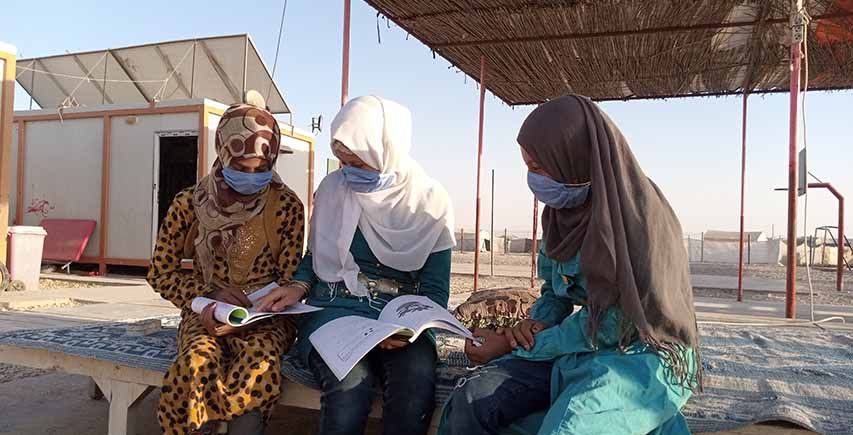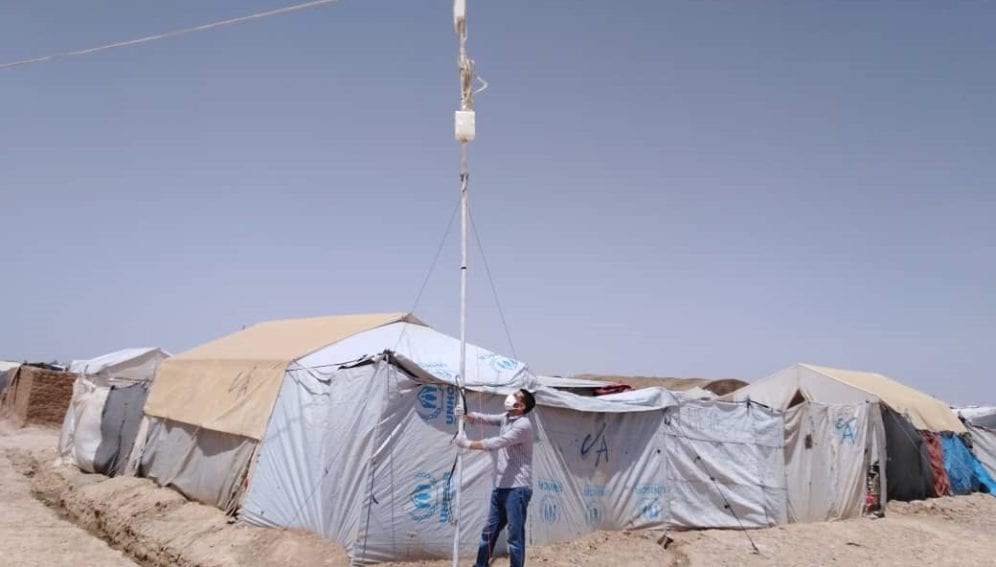Send to a friend
The details you provide on this page will not be used to send unsolicited email, and will not be sold to a 3rd party. See privacy policy.
While distance learning has become the norm for many students during the COVID-19 lockdown, for Syrians living in refugee camps, it is not usually a practical option.
But a project set up in one camp allows internally displaced schoolchildren to communicate and pursue their education using their smartphones – without the need for internet or computers.
Mohammed Youssef created an internal network to enable pupils to connect in the camp which lacks fundamental infrastructure, including electricity. The name and location of the camp have not been disclosed for security reasons.
“School closures after COVID-19 shifted the whole education process into distance learning, and this reality persists,”
Mohammed Rizkallah, teacher, American University, Cairo
“After exploring alternative technologies, we created a local internal network through which we succeeded in making direct audio calls,” said Youssef, projects manager at Chemonics International, an international development consulting firm.
Students can use the network to connect to a chat application, creating a virtual classroom, without needing to be connected to the internet, he added.
He says that for many people living in refugee camps, lacking even basic facilities, distance learning is a luxury. Conflict in Syria has already deprived more than 2 million Syrian primary schoolchildren of the right to education, according to UNICEF.
Youssef forged ahead with the Injaz education project despite obvious difficulties, including a lack of necessary equipment to establish the network and a shortage of computers. He designed the system to work on mobile phones which are available to almost 80 per cent of the camp’s occupants.
Because of the lack of equipment, the network could initially only serve a small number of students within a confined region. However, pupils overcame this by attending classes in shifts – some in the morning and others in the evening.
Within a few months, equipment became available to enable the whole camp to be connected at any time.
‘Vital and interactive’
Members of the Injaz team then taught children how to use the new system through a series of online videos, and adapted school curricula to suit the technology and distance learning. Teachers also underwent training on distance learning and online interaction with students.
A teacher at the camp who wished to remain anonymous said: “The local intranet has relinked students to their teachers, allowed students to access information anywhere… while making the process more vital and interactive.”
He highlights some challenges, however, such as some parents lacking experience in dealing with the intranet, and old-fashioned cell phones that cannot support the system.

Students looking at school books at the IDP Camp. Copyright: Chemonics International/SciDev.Net
The “intranet” is supplied with solar panels to provide a continuous electricity supply and it relies on open source technologies and programmes. This put the total construction cost at somewhere between $US 2,000 and 3,000, with almost no running costs.
The technology allowed more than 1,000 Syrian students of all ages to access education services throughout the COVID-19 lockdown which began in March 2020 and has only recently ended, with the possibility of being reinstated.
Education researcher Masa el-Mufti believes the success and efficiency of distance learning depends on adequate infrastructure, trained teachers and good communication between teachers, students and parents.
“So far, experiences that are not based on internet connection have proved reliable, especially because internet is inaccessible and expensive for people in refugee camps,” said El-Mufti, founder and director of Sonbola, an education and development organisation focused on Syrian refugee communities.
Distance learning faces major challenges in the Arab region, she added, especially in making it accessible for marginalised and less privileged populations, including refugees.
However, she believes the efficiency, low cost and sustainability of this kind of “intranet” makes it ideal to use in education, “not only for displaced and refugees, but all communities with weak infrastructure and inaccessibility to the internet”.
The innovation was granted a global development award last year, winning “the best in presentation” at the annual conference of the Society for International Development.
“Now, after proving the validity of the idea in the camp, we are planning to expand intranet solutions to provide distance learning within 15 more camps,” said Youssef, adding that a practical guide on how to create the system is being prepared for future crises.
Mohammed Rizkallah, who teaches at the graduate school of education, the American University in Cairo, said: “School closures after COVID-19 shifted the whole education process into distance learning, and this reality persists.”
He believes that distance learning could be here to stay, even after the pandemic.



